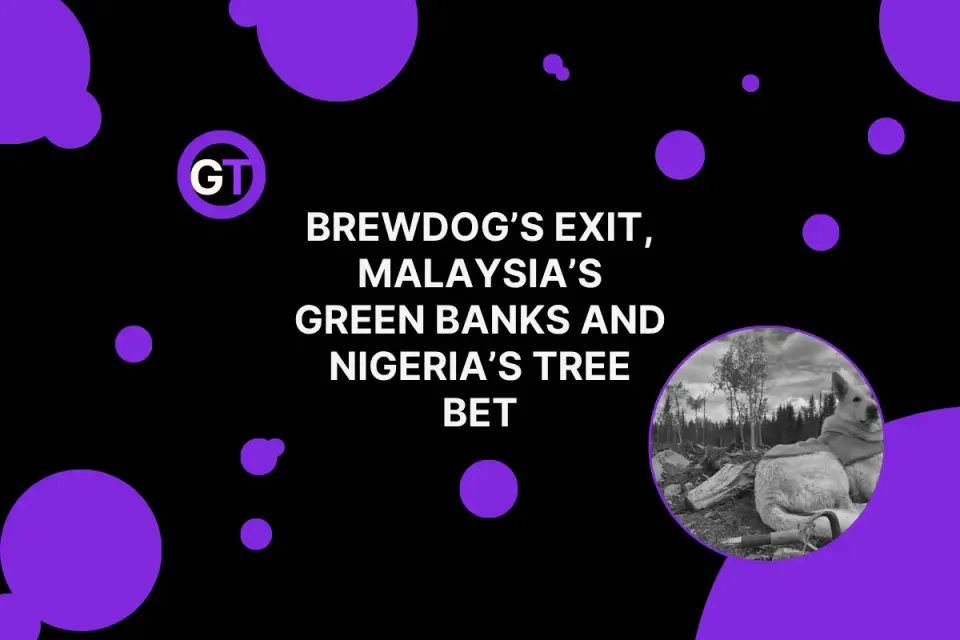Brazil’s $9 Billion Reforestation Plan
If managed well, Brazil’s ambitious plan could become a powerful model of how reforestation can drive economic development.

Go Big or Go Home
Brazil has set itself an epic task: restoring 12 million hectares—nearly 30 million acres—of forest by 2030. That’s like replanting an area the size of Pennsylvania, and it’s expected to cost a staggering $9 billion, according to a study by Instituto Escolhas. About 75% of the restoration will take place on private land. The plan is to make reforestation a major economic driver, creating jobs, new products, and an alternative to illegal logging. But here’s the thing: Brazil needs more than seedlings and good intentions—it needs a coordinated approach that can overcome serious challenges along the way.
Let’s See the Price Tag—and the Potential Payoff
Reaching Brazil’s 12-million-hectare reforestation goal isn’t just an environmental move; it’s a massive economic undertaking with a price tag of between $5 billion and $9 billion USD over the course of ten years, as estimated in 2016. But the investment is projected to yield substantial economic benefits: estimates suggest that reforestation could generate between R$13 billion and R$23 billion in revenue, add R$3.9 billion to R$6.5 billion in tax revenues, and create anywhere from 138,000 to 215,000 reforestation jobs and other adjacent employment in sectors like forestry management, environmental monitoring, and sustainable agriculture, according to the Instituto Escolhas study.
In other words, this isn’t just about planting trees—it’s about building an entire economic sector rooted in sustainable growth, creating opportunities for local communities, and reducing reliance on illegal logging. If managed well, Brazil’s ambitious plan could become a powerful model of how reforestation can drive economic development.
What’s with the variation in projected costs? It all depends on a number of factors. Different parcels of land will be restored with differing numbers of trees. Densities of between 1000 and 1800 trees per hectare are typical. There will also be differing amounts of planting versus natural regeneration versus enhancement of existing forests. Three scenarios from the study by Instituto Escolhas are mapped below. Natural regeneration—allowing trees to come back naturally—is obviously going to be cheaper than actually growing and planting new trees. An open-access study by Busch et. al. (2024) goes more into this on the global level—we highly recommend checking it out.
Another recent study by Crowther labs examined cost breakdowns across Latin American planting projects, based on self-reported figures—we’ve attached the median cost breakdown shown in that study below.
Why Better Data is Non-Negotiable
For Brazil to hit its ambitious reforestation targets, monitoring, calculating, and organizing restoration efforts is essential, experts say. Right now, scattered and inconsistent information on reforestation progress is a major bottleneck for reaching the 2030 goals - this is the case across the board, throughout the international community. What’s needed is a standardized, transparent, and accessible system that clearly shows where and how much land is being restored—and by whom.
Only two states—São Paulo and Espírito Santo—currently contribute detailed data to the national Restoration and Reforestation Observatory, leaving policymakers with a limited and often unreliable picture of national progress. While satellite imagery remains useful for broad monitoring, experts caution that it may, at times, overlook details essential to ecosystem health, such as forest density or species diversity. For example, an area labeled as “restored” via satellite might not yet function as a full, thriving ecosystem.
Without ground-truthing—on-the-ground data collection—Brazil risks basing decisions on progress reports that may appear more optimistic than they are. So if Brazil’s reforestation effort is to succeed, it needs more than just satellite images. It needs ground-truthed data (see what we did there?) that’s accessible to everyone involved, from policymakers to local communities.
What It’ll Take to Make This Work
To bring this $9 billion vision to life, Brazil needs a centralized data infrastructure that combines satellite imagery with on-the-ground verification, or ground truth data. This would let policymakers see real progress, allocate resources efficiently, and meet the standards of Brazil’s Forestry Code. A clear, standardized system would give everyone—public and private stakeholders alike—a reliable measure of success.
If Brazil can pull it off, this could set a global benchmark for large-scale forest restoration, proving that reforestation isn’t just an environmental necessity but a serious economic opportunity. But without strong data and accountability, Brazil’s billion-dollar effort risks falling short of its ambitious goals—and with the world watching, Brazil can’t afford to miss the mark.
Will we be able to see where these trees are planted? Will we be able to monitor their survival? Will we know the species used, the contractors, the seed collectors, the methods? This remains to be seen. But obviously, we hope the answer is yes.
Sources
Brazil launches reforestation plan. (2024, November 4). Argus Media. Retrieved from https://www.argusmedia.com/en/news-and-insights/latest-market-news/2625012-brazil-launches-reforestation-plan
Strassburg, B. B. N., Beyer, H. L., Crouzeilles, R., Busch, J., et al. "Cost-effectiveness of natural forest regeneration and plantations for climate change mitigation." Nature Climate Change 14 (2024): 1001–1008. https://doi.org/10.1038/s41558-024-02068-1 Retrieved from https://www.nature.com/articles/s41558-024-02068-1
Hanbury, S. (2024, November 7). Brazil renews plan to restore degraded land half the size of the UK. Mongabay. Retrieved from https://news.mongabay.com/short-article/2024/11/brazil-renews-plan-to-restore-degraded-land-half-the-size-of-the-uk/
Quanto o Brasil precisa investir para recuperar 12 milhões de hectares de floresta? Sumário Executivo (2017). Instituto Escolhas. Retrieved from https://escolhas.org/wp-content/uploads/2016/09/Quanto-o-Brasil-precisa-investir-para-recuperar-12-milhoes-de-hectares-de-floresta_SUMARIO-EXECUTIVO.pdf
Sansevero, J. B. B., Arellano, E. C., Vallejo, V. R., Cole, R. J., Brancalion, P. H. S., Guariguata, M. R., ... & Smith, A. (2023). Forest restoration in practice across Latin America. ResearchGate. https://doi.org/10.1016/j.foreco.2023.120724 Retrieved from https://www.researchgate.net/publication/380535538_Forest_restoration_in_practice_across_Latin_America
Tobie, M. (2022, March 21). Brazil’s Atlantic Forest gets a chance at a fresh start through restoration. Mongabay. Retrieved from https://news.mongabay.com/2022/03/brazils-atlantic-forest-gets-a-chance-at-a-fresh-start-through-restoration/
Edited by Chris Harris

This work is licensed under a
Creative Commons Attribution 4.0 International License.




